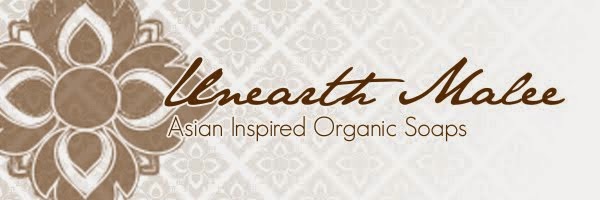
Are They All Handmade Soaps?
I'm sure you've seen many businesses say their products are handmade, which technically they are BUT not all are made from scratch.
There is a difference.
Cold Process Soap Making: This is where "true soap" is created. Sodium hydroxide molecules bind with oil molecules during the saponification process and soap is created. Glycerin is the byproduct of this process. All cold process soaps contain "naturally retained glycerin." You also need accurate measurements of all ingredients. If you have too much lye, then your soap is lye heavy and unusable on skin. If not enough lye, your soap may not properly cure and you can have a big oily mess of goop.
Melt and Pour Bases: These have become VERY popular. Why go through the process of creating your own recipe, purchasing equipment to make soap, wait 4-6 weeks to use the soap, when all you have to do is order a base online, melt the soap, add a lil bit of this and a lil bit of that? These bases are easy to find, in fact you can purchase glycerin based soap at Michael's Art Store. So, are melt and pour soaps bad -- no, I'm not saying that at all. There's just a difference.
THE DIFFERENCE: Though you have the easiness of not having to create the actual soap itself with melt and pour, you are truly not in control of the core ingredients. Example, another company sells a Bamboo Charcoal soap with lavender essential oil. They purchased the soap base, added the charcoal and essential oil. The only control they had over the creation of the soap really lies in where they purchased the product from.
With cold process soap making, the artwork is in the recipe itself. You can custom tailor each recipe with a variety of vegetable oils. Each vegetable oil contains a specific mixture of fatty acids, some are better for acne, troubled skin, and some are more moisturizing, etc.
So, as a customer how can you tell? Most companies will not advertise that they purchase soap bases. They will tell you that the soap is Handmade. There is no strict definition of what "Handmade" means and no regulation.
How to Tell the Difference?
1. Look at the Ingredients: If they contain "Sorbitol," or "Sorbitan Oleate." These are key terms to indicate they are melt and pours.
2. Cold Process Soaps usually use the words, "Naturally Retained Glycerin" in their ingredient list. If not, and the soap just states glycerin, then I would look further at the ingredients.
3. Really look at it: Most glycerin melt and pour bases are translucent, even with added mica colors, you can still see through them a bit. Some goat's milk melt and pour bases look pretty close to cold process soaps. One similarity I noticed with melt and pours is that they have this plastic kind of look to them.
4. Just ask: Why not just ask the soapmaker, e-mail, call, etc. They have a responsibility to tell you the truth about purchasing their bases from somewhere else.
So after all the explaining, can you tell in the pic which is the cold process soap?

